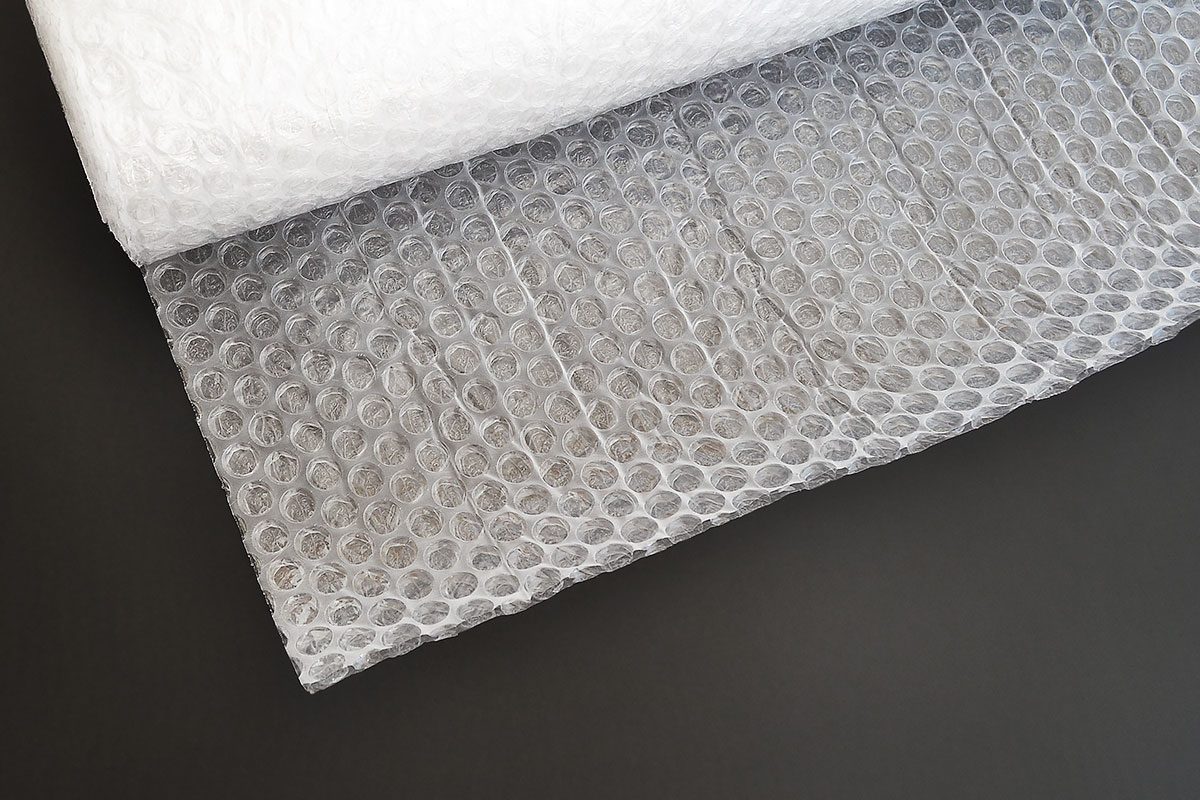Don't know how to properly use bubble wrap? Don't worry, we asked a moving expert the important questions so you don't have to.

Here’s Why Only One Side of Bubble Wrap Is Poppable

Whether you’re curious about how to properly use bubble wrap for personal or professional reasons, you’ve come to the right place. You may not have considered how the method you use to wrap your items with bubble wrap can impact the success of your move or transportation of specific (and fragile) objects because you figure that as long as plastic bubbles are present, you’re in the clear. We hate to be the bearer of bad news, but you would be wrong. Knowing how to use bubble wrap properly is extremely important and can make or break your experience (and objects).
Ahead, a moving expert explains how to properly use bubble wrap and provides insights into how this essential moving material is made. They also share some information about the structure of bubble wrap, which features bubbles only on one side, and the consequences that you can potentially face if you opt to take the easy way out during the wrapping process.
How Is Bubble Wrap Made?
Bubble wrap is made from plastic, or more specifically, low or high-density polyethylene. “Bubble Wrap is typically made by melting and combining polyethylene beads into thin sheets,” explains Ross Sapir, the founder & CEO of Roadway Moving. “One of these sheets is formed over a roller with holes that create the bubbles by sucking air into them, while a second flat sheet is laminated on top to seal the bubbles in place.”
Why Is Only One Side of Bubble Wrap Bubbly?
Only one side of the bubble wrap bubbles due to the way it’s made: the second sheet is bubble-less because it’s flat to seal the bubbles of the first sheet in place.
Furthermore, Sapir adds that the flat side facilitates an easier moving, storing, stacking, and handling experience after it is wrapped around various objects. “This design also helps the bubbles stay intact longer by protecting them from direct pressure,” adds Sapir.
Does It Matter What Side You Use to Pack Delicate Items?
Yes, it does matter what side of the bubble wrap you use to pack delicate items. “The bubble side should face inward, toward the item you’re wrapping,” notes Sapir. This maximizes cushioning and prevents the item from directly hitting the hard surface of the outer wrap.” After all, the last thing you want is to invest in high-quality bubble wrap only to discover that you don’t know how to use it properly, causing damage to your fragile items.
How to Bubble Wrap

Having premium bubble wrap by your side is only as good as how it is wrapped. That said, knowing how to properly use bubble wrap is key. Sapir notes that bubble wrap should be used following the steps below:
- Place the bubble wrap on a flat surface with the bubble side up
- Center the item to be wrapped on the sheet.
- Completely encase the item in the bubble wrap, making certain that the bubbles come into contact with the object to absorb any vibrations or shocks that may cause impact.
- Use packing tape to secure the bubble wrap to your item.
- Double wrap extra fragile items if needed.
- Place the wrapped item in a box with cushioning via packing peanuts or crumpled paper.
About the Experts
-
Ross Sapir is the founder and ceo of Roadway Moving. He has overseen the packing and protection of thousands of household and specialty items, including fine art and televisions during the 17 years he has been leading the team at Roadway Moving. He is knowledgeable about bubble wrap since it is one of the company’s most essential packing materials.
Sources
-
Facilitiesservices.ufl.edu: “Film and Bubble Packs”
RELATED:

















